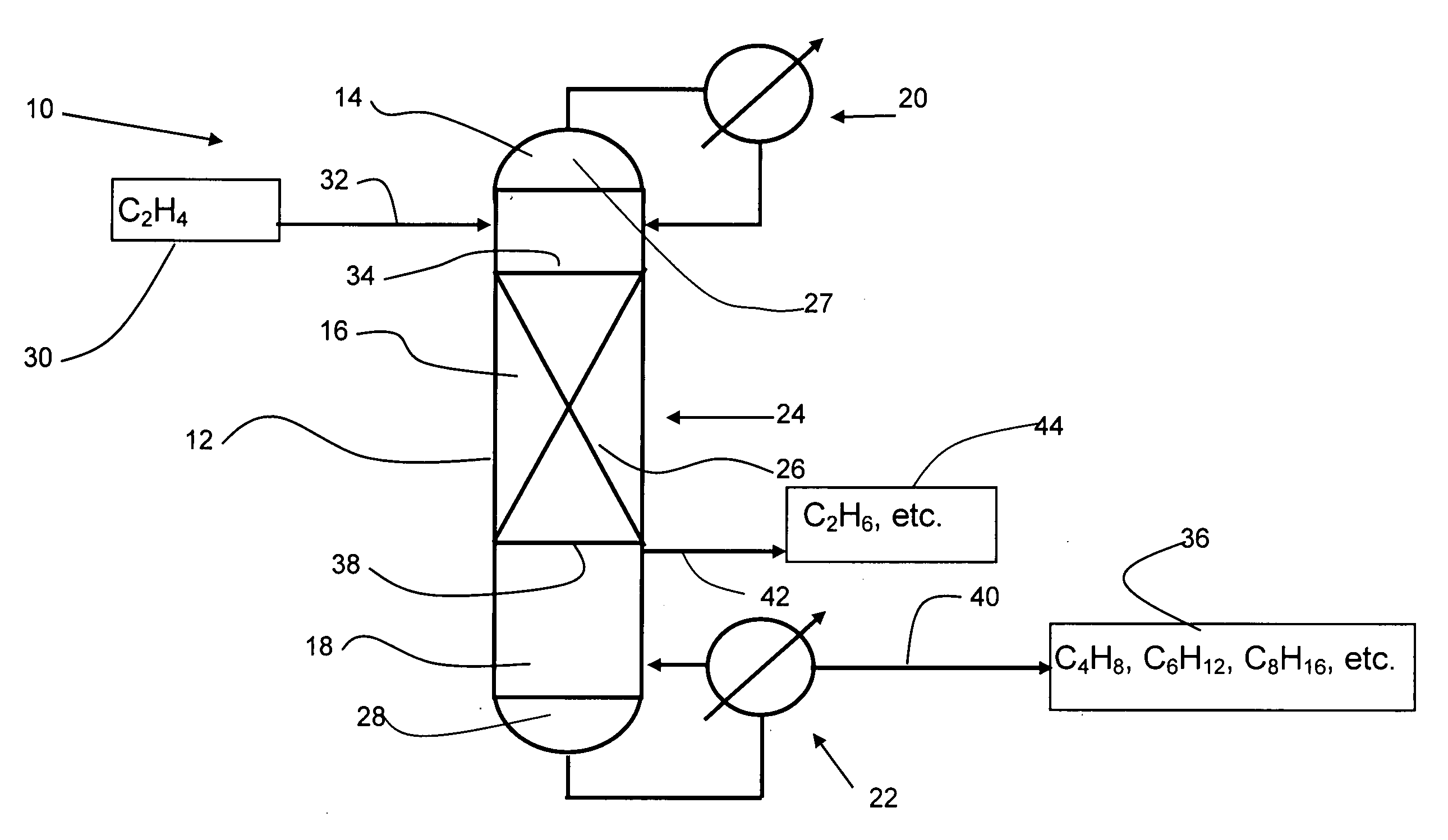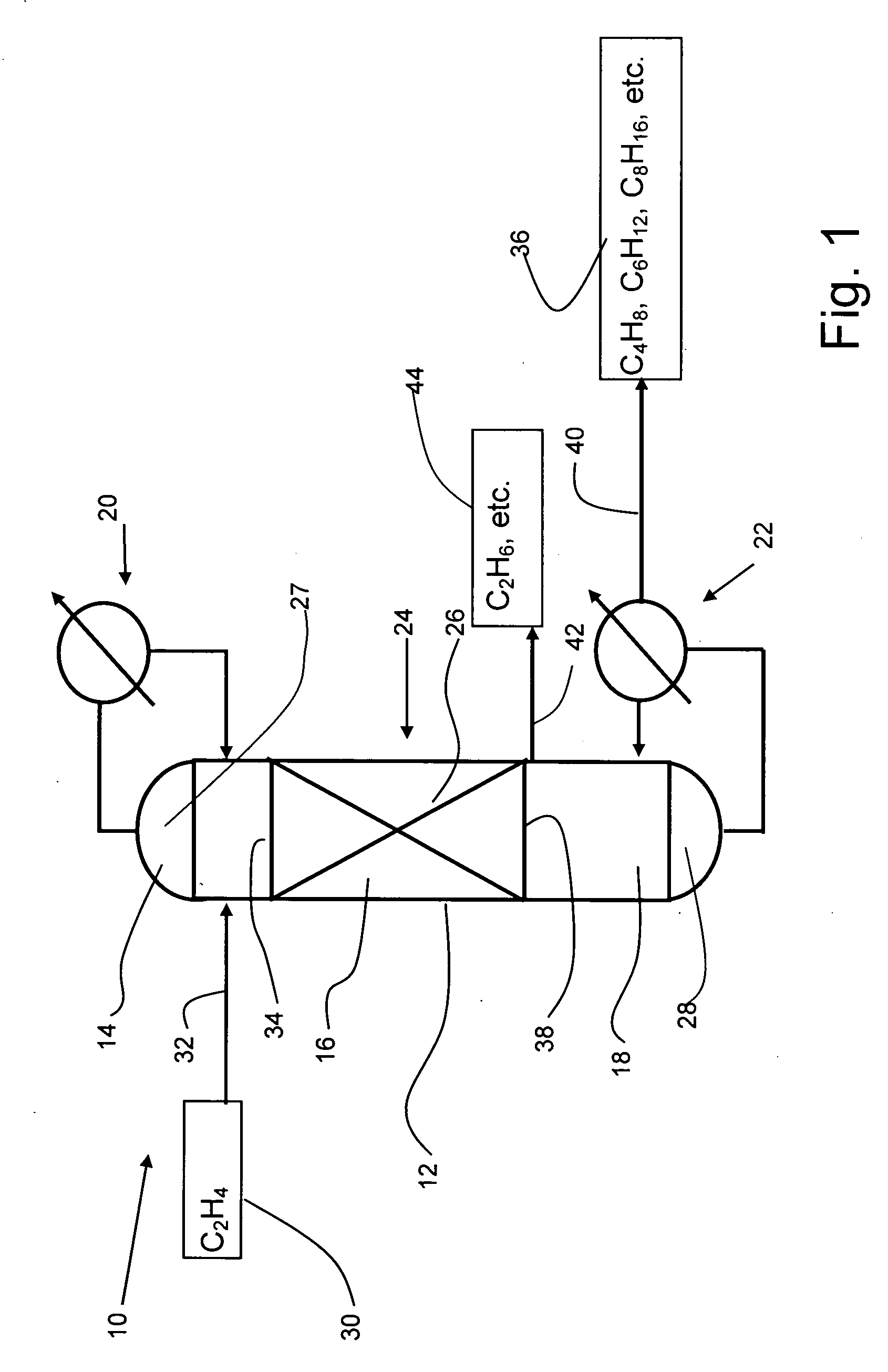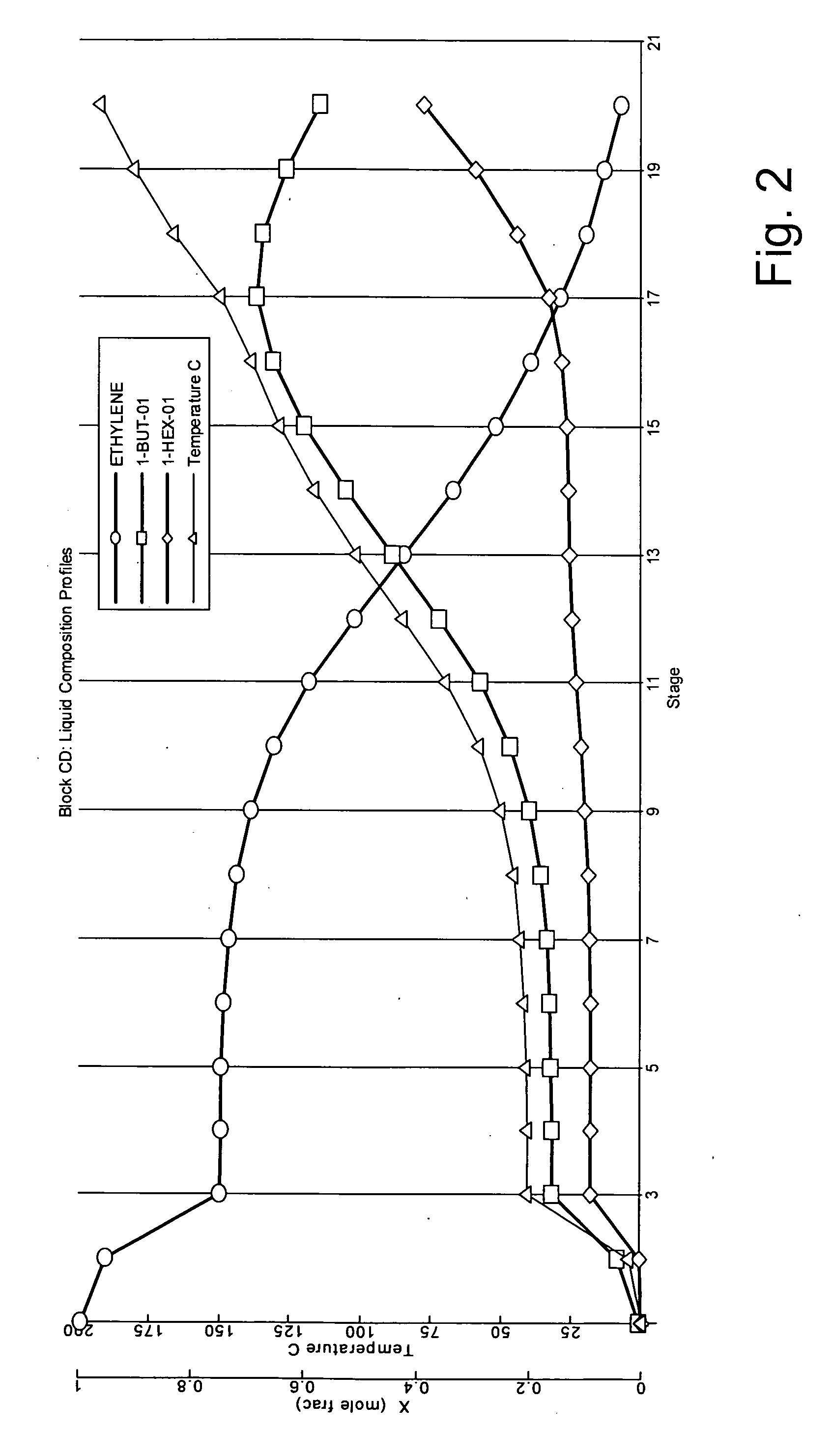Process for making higher olefins
- Summary
- Abstract
- Description
- Claims
- Application Information
AI Technical Summary
Benefits of technology
Problems solved by technology
Method used
Image
Examples
example 1
Activity of Catalyst Comprising Ni Supported on Alumina
[0038]We have shown that the data reported by Zhang et al. in “Oligomerization of Ethylene in a Slurry Reactor Using a Nickel / Sulfated Alumina Catalyst”Ind. Eng. Chem. Res. 36, 3433-3438 (1997) are reproducible, and that the catalyst is useful for the present invention under catalytic distillation conditions.
[0039]Zhang et al. conducted a series of experimental runs using a batch reactor and under mild operating conditions when using heptane as solvent. The catalyst Ni / ALON, prepared as described by them, was shown to be highly active when used under the following operating conditions:[0040]Reaction temperatures: 278, 298, 308, 323 K[0041]Pressure: 170.26 kPa.[0042]Run duration in a Parr reactor: 3 h[0043]n-Heptane (solvent) charge: 120 mL[0044]Stirring speed: 450 rpm[0045]Catalyst: 1.7 wt % Ni and 5.0 wt % SO42−[0046]Catalyst charge: 0.2, 0.3, 0.4, 0.5 g
[0047]The catalyst is highly active for oligomerization. It was found that ...
example 2
Simulation of the Process with Different Operating Parameters
[0049]The following are data obtained through simulations using ASPEN PLUS® software. The design was based on a column equipped with 20 equilibrium stages. The simulation results show the temperature and concentration profiles along the column. At the top of the column (stage 1), it can be seen from the concentration profile that its composition is similar to the feed (mostly C2=). At the bottom of the column (stage 20), the product contains C4= and C6= and residual C2=. In the simulation it is assumed that the oligomerization produces only C4= and C6= to a different fraction of equilibrium concentrations. The results on product distribution are shown in FIGS. 2-6. FIG. 7 is another simulation run with only 10 equilibrium stages in the column, all other conditions are identical to those used in FIG. 6. The temperature profile provides the design data for choosing the reboiler and the condenser.
[0050]It will be appreciated ...
PUM
 Login to View More
Login to View More Abstract
Description
Claims
Application Information
 Login to View More
Login to View More - Generate Ideas
- Intellectual Property
- Life Sciences
- Materials
- Tech Scout
- Unparalleled Data Quality
- Higher Quality Content
- 60% Fewer Hallucinations
Browse by: Latest US Patents, China's latest patents, Technical Efficacy Thesaurus, Application Domain, Technology Topic, Popular Technical Reports.
© 2025 PatSnap. All rights reserved.Legal|Privacy policy|Modern Slavery Act Transparency Statement|Sitemap|About US| Contact US: help@patsnap.com



